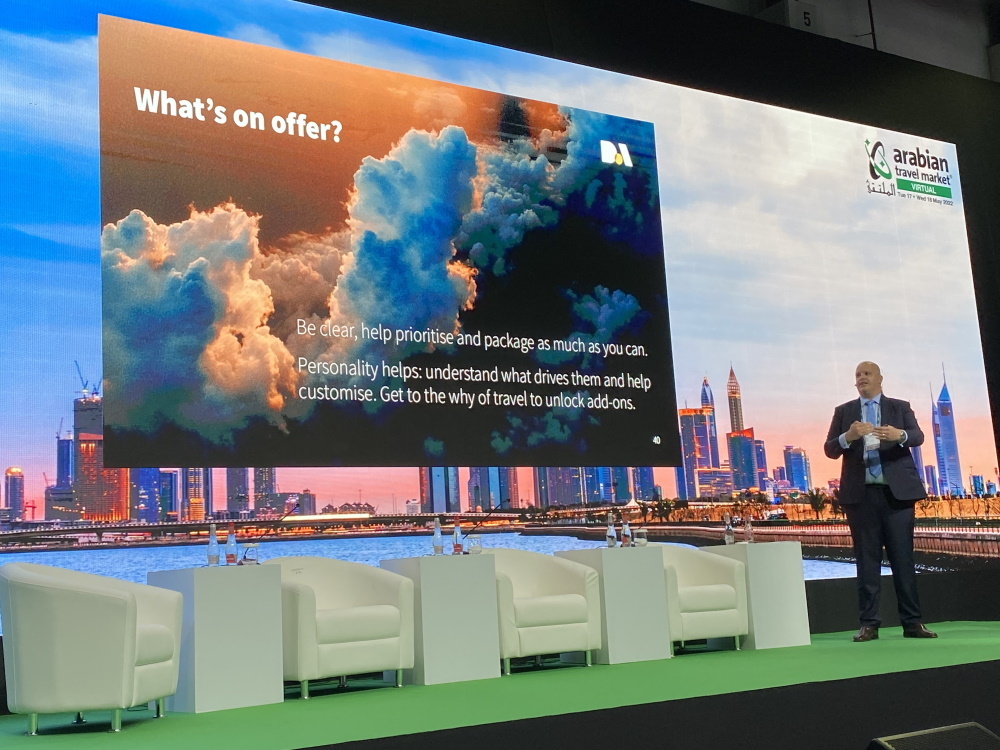- Speaking during Day 2 of Arabian Travel Market in Dubai, consumer intelligence company D/A highlighted the important role GCC travellers have to play in tourism recovery
- The UAE and Saudi Arabia top the MENA region list of where GCC travellers plan to travel
- The company utilises AI technology to measure tourism trends in the GCC by monitoring over 4 million social media posts from two million unique Arabic speaking social media accounts in the region
Dubai, United Arab Emirates, 11 May 2022: GCC travellers are looking to make up for lost time when it comes to travel, with the anticipation of new experiences dominating conversations, according to research revealed yesterday at the Arabian Travel Market (ATM) 2022 by leading consumer intelligence company D/A.
The research is based on the analysis of over four million social media posts and comments from more than two million Arabic-speaking unique users in the GCC. The number of travel conversations and posts about travel increased by 110% and 151%, respectively, between 2019 and 2021.
Speaking on the ATM Global Stage on Tuesday, 10 May, Paul Kelly, Managing Partner, D/A, said: “Travel conversations increased to over 1.3 million in 2021, underscoring the willingness by Arabic speakers in the GCC to travel, regardless of age or nationality. We are ultimately witnessing the pent-up demand from the last two years coming to the fore as borders reopen, flights are back on track and restrictions are lifted.”
GCC travellers have a vital role in tourism recovery, a direct result of their spending power. According to the UNWTO, GCC travellers spend 6.5 times more than the global average, with 40% of GCC travellers spending more than AED36,700 on their last trip to Europe. Travellers from Saudi Arabia are reportedly the highest travel spenders globally.
“Overall, when it comes to the GCC traveller, the conversations indicate that something new is the order of the moment. Even in the familiar, a new experience is at the top of the wish list for those intent on travelling soon – a huge change from what we have seen in the past year or two,” Kelly added.
In terms of holiday preference, the consensus is on escaping and breaking free and discovering new experiences, which many have been unable to do in the last two years. Those in the younger age groups were keen on shopping and enjoying local flavours, while the older groups were more focused on staying closer to nature and relaxing. Having fun was a mainstay; however, mid-career professionals have a lot of work travel lined up.
Holiday destinations favoured by GCC travellers followed the global google trend, which saw a spike in the search terms ‘staycation’ in 2020, which was representative of the number of people from GCC countries looking to vacation locally.
According to the D/A research, the UAE was the most popular destination in the MENA region, followed by Saudi Arabia, Kuwait, Egypt, and Qatar. In Europe, the UK was the most popular destination, followed by France, Germany and Italy, with Switzerland rounding out the top five list.
Elsewhere on the agenda on Day 3 at the ATM Global stage, delegates participated in an in-depth discussion about the future of the region’s hotel industry and the importance of unique dining experiences as an essential tool in the destination marketing playbook. Moving forward, on the final day of ATM 2022, highlights include redefining the new and evolved Indian traveller, responsible technology for travel and tourism, and the return and rise of city tourism.
ATM 2022 concludes on Thursday, 12 May, at the Dubai World Trade Centre (DWTC).
If you are planning to attend ATM in person, please feel free to post using the hashtags #ATMDubai and #IamgoingtoATM.
To register for ATM 2022, go to https://www.wtm.com/atm/en-gb/enquire.html.
For more news about ATM, you can visit https://hub.wtm.com/category/press/atm-press-releases/.
For general information on this year’s show, please visit wtm.com/atm/en-gb.html
